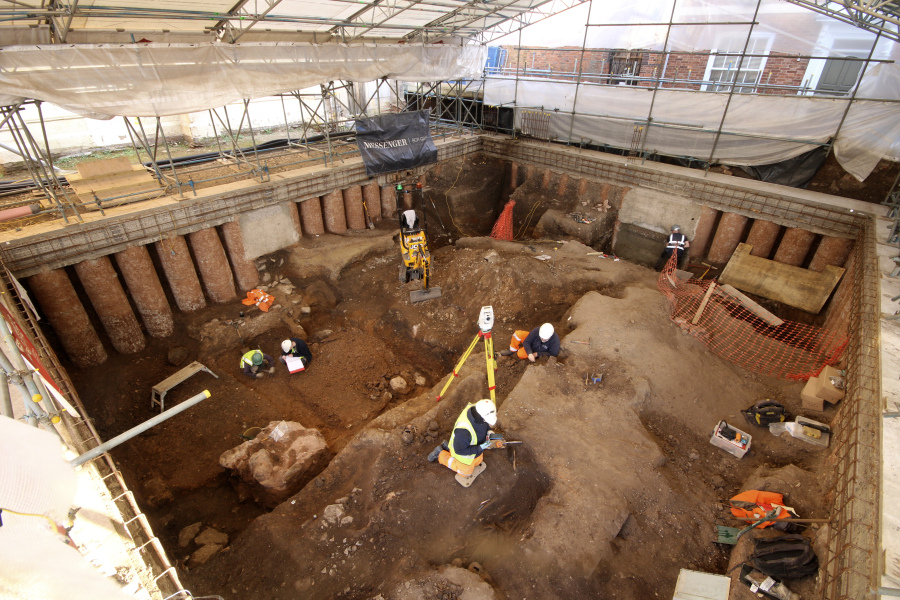LONDON (AP) — Archaeologists have uncovered what they believe to be a Roman shrine beneath a former graveyard in the grounds of a cathedral in central England.
Experts from the University of Leicester said Tuesday that they found what appears to be the cellar of a Roman building and a fragment of a 1,800-year-old altar stone during excavations in the grounds of Leicester Cathedral.
“There’s always been this folk tale that there was a Roman temple underneath the cathedral,” said Mathew Morris, excavation director for the University of Leicester’s Archaeological Services.
“Until now, there’s been no way of being able to say whether there was or not,” he added, but the new findings reveal that “there is definitely a Roman place of worship underneath the cathedral.”



